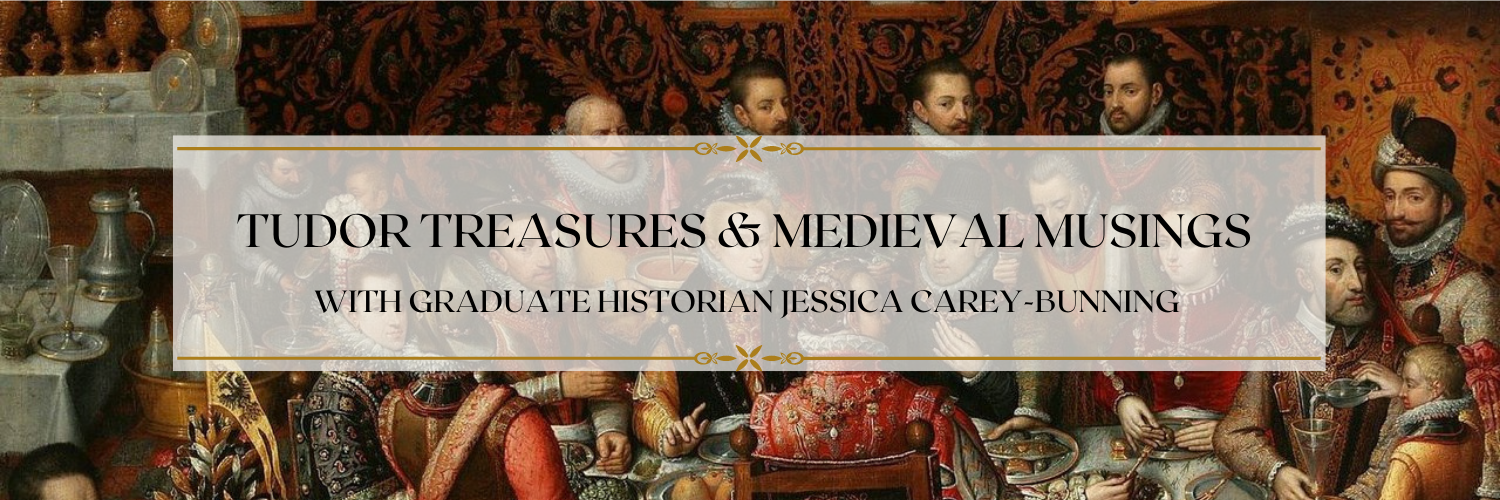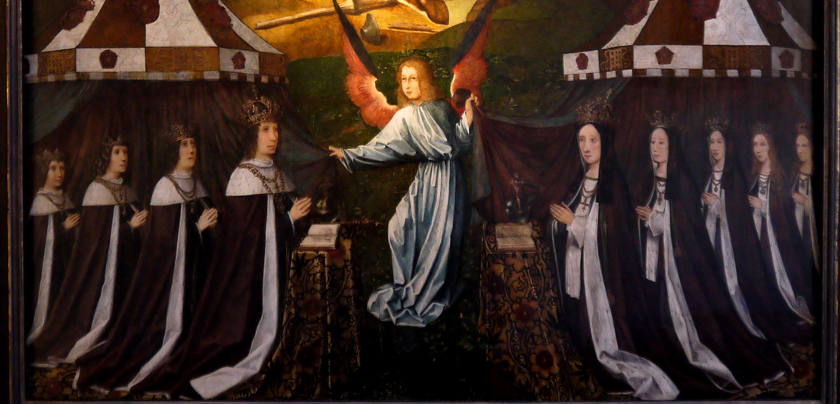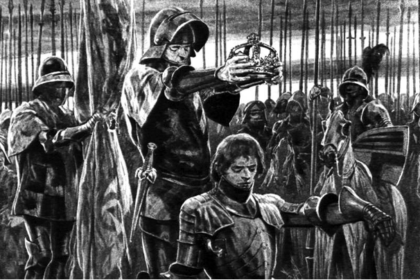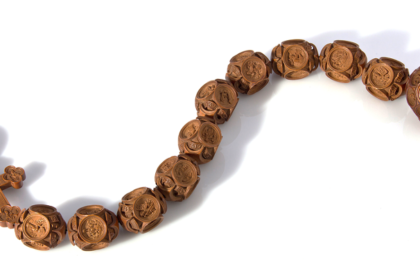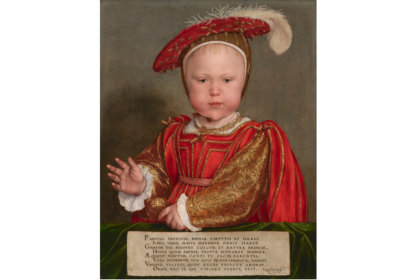In the past, I’ve discussed the children of Henry VII and Elizabeth of York. Today, I wanted to talk a little about their names.
Henry VII and Elizabeth of York had seven children together, four of whom lived passed infancy, three of whom survived to adulthood:
Arthur – 19th September, 1486 – 2nd April, 1502
Margaret – 28th November, 1489 – 18th October, 1541
Henry VIII – 28th June, 1491 – 28th January, 1547
Elizabeth – 2nd July, 1492 – 14th September, 1495
Mary – 18th March, 1496 – 25th June, 1533
Edmund – 21st February, 1499 – 19th June, 1500
Katherine – 2nd February, 1503 – 18th February, 1503
Although most kings named their eldest son after themselves – hence, the runs of King Henrys and Edwards – Henry and Elizabeth chose the name Arthur for their eldest. Henry VII was a master of marketeering; he had to be, as Plantagenet blood flowed very weakly, and fairly illegitimately, through his veins, and it was a stretch to justify why he should be king. Naming his son Arthur, after the legendary King of the Britons, was part of the image he was creating. It not only justified, but even glorified his Welsh roots, connecting his family with the Once and Future King.
The name of their eldest daughter is, I think, very revealing. Just as eldest sons were usually named for their fathers, eldest daughters were frequently named for their mothers; Elizabeth of York herself was the eldest child of Elizabeth Woodville and Edward IV. But Henry VII was known to be exceptionally close to his own mother, Margaret Beaufort, and he relied upon her both personally and politically, in way that perhaps even rivalled his relationship with his wife. I think we can see here the importance of Henry and Margaret’s relationship in the naming of his second child.
The next child to be born was a second son, and this time, Henry VII did name him after himself. Additionally, the name Henry carried strong connotations of kingship, and particularly of the House of Lancaster; Henry IV, Henry V, and Henry VI were all Lancastrian kings. In fact, all previous King Henrys were renowned for their greatness – by Lancastrian supporters, Henry VI’s weakness was seen as saintly. This Henry, although merely the ‘spare,’ would carry forward the family name as Henry VIII.
On the surface, the second daughter seems to have been named after her mother, in keeping with the tradition previously mentioned. There is perhaps another layer to the name. As I mentioned, Elizabeth of York was named for her own mother. Sadly, Elizabeth Woodville died on the 8th June, 1492, barely a month before her granddaughter was born. Though we cannot know for certain, I think it is safe to say that Elizabeth of York’s mind was also on her mother when she named the baby her mother would never get to hold. Perhaps it was a comfort to think that grandmother and grandchild were reunited shortly after her third birthday.
The origin of the name of the next of Henry and Elizabeth’s children to be born, Mary, is not as obvious. Whilst she may have been named after the Virgin Mary, that does not seem to fit with the other names the couple chose. I think that Mary was named for Elizabeth’s late sister, Mary of York. Born in 1467 to Edward IV and Elizabeth Woodville, Mary was born just 18 months after her sister Elizabeth. The two girls shared a nursery, shared a childhood, and together endured sanctuary after their father was briefly deposed in 1471. They were both made Ladies of the Garter and in marriage negotiations, the names of both girls often appeared, with Mary featuring as a ‘back-up’ option in case something happened to Elizabeth. In other words, the girls were known to be close. Tragically, in 1482, Mary died, aged just 14. We can only imagine the impact this had on Elizabeth, and when their father died the following year, it must have felt like tragedy following tragedy, grief following grief. I believe that this is the origin of Mary Tudor’s name. It follows the pattern of using family names, and as the third daughter, her naming would have been less dynastically important to Henry VII’s plans.
The final son to be born to Henry and Elizabeth, who would also not reach adulthood, was called Edmund. There are no mysteries as to where this name came from; he was named after his grandfather, Henry VII’s father, Edmund Tudor. Edmund Tudor died before even his own son was born, let alone his grandson, and yet as the son of Katherine of Valois and Owen Tudor, he played an important role in founding the Tudor dynasty. I feel like narratively Edmund Tudor is always cast somewhat in a villainous role – impregnating his wife, Margaret Beaufort, when she was scandalously young, from which she almost died – however if he named a son after him, perhaps Henry VII grew up with a more positive view of his father. Edmund’s brother, Jasper Tudor, played a large role in Henry’s formative years, perhaps he told his nephew about Edmund.
Finally, we come to Katherine, who died within days of birth in February 1503; her mother died within a week of her daughter’s death. I think there are two possible sources for Katherine’s name. The first and most obvious one is Katherine of Valois, the foundress of the Tudor dynasty. Although it has been said that Henry VII sought to distance himself from his controversial grandmother, he actually very deliberately positioned himself as her descendant on numerous public occasions throughout his reign; far from being ashamed, he was proud of his royal ancestress, perhaps even proud enough to name his daughter after her.
However, there is another possible family connection that played a role in the naming of young Katherine. Once again, we turn to a sister of Elizabeth of York. Katherine of York was very close to her older sister, and we have evidence of Elizabeth bestowing many gifts upon Katherine. Henry married Katherine William Courtenay, Earl of Devon, as reward for one of his strongest supporters, and to further strengthen their ties. However, in 1502, Courtenay was suspected of being involved with a plot to place a Yorkist pretender on the throne, and was imprisoned and dispossessed as a result. It was only through her sister’s intervention that Katherine not only escaped sharing her husband’s fate. Elizabeth ensured that her sister was allowed to remain at court, provided for the needs of her nephews and niece, saw to it that Katherine was even granted a pension. Upon his ascension, Henry VIII also showed great favour to Katherine, suggesting that Katherine was a central part of family life. Did Elizabeth choose to name her daughter after the sister who was very recently tied to scandal, perhaps as a vote of confidence? Perhaps the name appeal to both Henry and Elizabeth for the separate familial connections, leading to baby Katherine being named after both her Katherine relatives.
